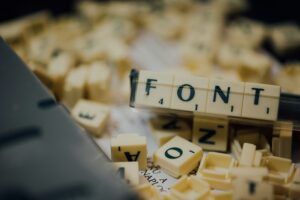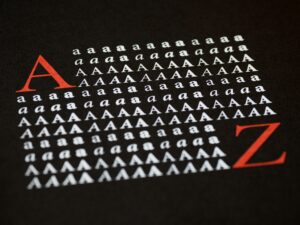
When it comes to creating a memorable and effective event brand, the fonts you choose play a pivotal role in conveying your message, setting the tone, and creating an emotional connection with your audience. The right typography can elevate your event from ordinary to extraordinary, ensuring that every promotional piece, invitation, and sign feels cohesive and purposeful. In this article, we will explore how modern fonts can shape event branding, highlight some popular fonts used for various types of events, and discuss best practices for selecting the perfect typeface for your next gathering.
Typography is more than just text; it’s a visual element that can express a brand’s personality and evoke specific emotions. In event branding, fonts help communicate the essence of the event and give attendees their first impression before they even step foot into the venue. Here are a few reasons why fonts matter in event branding:

When selecting a font for event branding, it’s essential to align your choice with the theme of the event. Here are some popular font styles used in modern event branding:
Serif fonts have small lines or “feet” at the ends of their characters, giving them a traditional and formal appearance. They are perfect for high-end corporate events, weddings, and gala dinners. Serif fonts evoke a sense of authority and elegance, making them suitable for events where professionalism is key.
Sans serif fonts, as the name suggests, do not have the small lines at the ends of characters. They are clean, modern, and versatile, often used in events that want to feel fresh and approachable. These fonts are great for tech conferences, festivals, or contemporary art exhibitions.
Script fonts mimic handwriting, adding a personal, elegant touch to event branding. They are perfect for creative events, weddings, or anything that requires a sophisticated, feminine, or playful vibe. While they look beautiful, it’s important to use them sparingly to maintain readability.
Display fonts are bold, unique, and designed to stand out. These fonts are often used for event headers, posters, or logos that need to grab attention. They are not ideal for body text but work well in large, eye-catching formats.
Modern fonts combine the best of both serif and sans serif fonts. These fonts are sleek, minimalistic, and contemporary. They work well for events that emphasize innovation and a forward-thinking approach. Startups, tech conferences, and creative workshops often embrace modern fonts.

Choosing the right font for your event is not just about aesthetics; it’s about finding a typeface that aligns with the event’s purpose and audience. Here are some key factors to consider:
Once you’ve selected the right fonts, it’s crucial to implement them in a way that enhances your event branding. Here are some best practices to follow:
The fonts you choose for your event branding have a significant impact on how attendees perceive the event. A well-chosen typeface can establish your event’s mood, enhance its identity, and ensure that the communication is clear and effective. By understanding the importance of typography, selecting the right fonts for your event’s theme and audience, and following best practices in font implementation, you can create a visually appealing and impactful brand that resonates with your audience. Typography is a powerful tool—use it wisely to elevate your event’s presence and ensure its success.